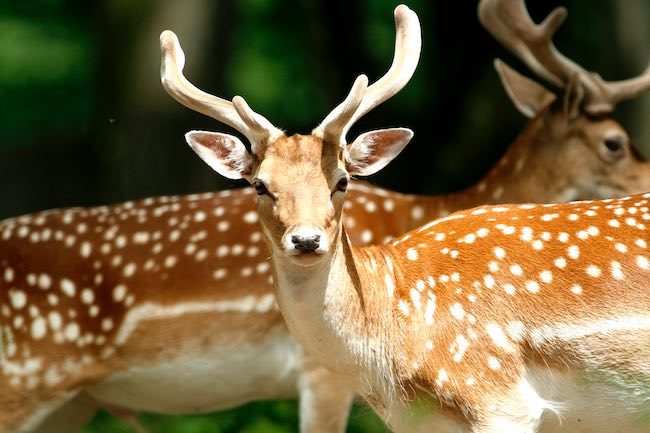Feeding Fallow Deer in Your UK Garden

A quick Guide to feeding fallow deer in the UK in your garden
Fallow deer (Dama dama) are majestic and graceful creatures that can bring an enchanting touch to your garden. If you live in the UK and are fortunate enough to have fallow deer visiting your property, providing them with appropriate food can enhance their well-being while allowing you to enjoy their presence. In this article, we will explore the best practices for feeding fallow deer in a UK garden, ensuring their nutritional needs are met while respecting their natural behaviour.
Understanding Fallow Deer’s Natural Diet
- Before delving into feeding practices, it’s essential to understand the natural diet of fallow deer. These herbivores primarily consume grasses, herbs, leaves, shoots, nuts, and acorns. They have a selective feeding behaviour and prefer a diverse range of vegetation.
Considerations for Feeding Fallow Deer
- Feeding fallow deer in your garden requires careful thought and consideration to ensure their well-being and minimise potential harm. Keep the following guidelines in mind:
a. Supplementation, Not Dependency:
Feeding should supplement their natural foraging, rather than creating a dependency. The goal is to support their health, especially during harsh winters or times when food is scarce.
b. Local Regulations and Permissions:
Before feeding fallow deer, check local regulations and obtain any necessary permissions. This is particularly important in areas with protected wildlife or nature reserves. Most of Wiltshire does not require permission to feed the local deer
c. Health and Safety:
Ensure the feeding area is safe for both deer and humans. Avoid potential hazards, such as toxic plants, sharp objects, or areas with heavy traffic. Keep in mind that wild animals should not be handled or approached closely.
Providing Suitable Food
- To provide appropriate food for fallow deer, consider the following options:
a. Natural Vegetation:
Allow a portion of your garden to grow naturally, providing deer with access to grass, shrubs, and trees. This encourages their natural browsing behavior and ensures a diverse range of vegetation.
b. Deer-Friendly Plants:
Plant deer-friendly species, such as yarrow, blackberry, hawthorn, and bramble. These plants provide nutritious foliage and berries, enriching the deer’s diet.
c. Supplementary Feeding:
Supplement natural forage with food specifically designed for deer. Consult with local wildlife experts, garden centres, or animal welfare organisations for suitable options. Commercial deer pellets or blocks can be provided sparingly. However we have found Badminton Monach Deer Cubes to be the best
d. Water:
Ensure a freshwater source is available year-round, such as a shallow trough or a small pond. Check the water regularly to ensure it remains clean and accessible.
Feeding Practices
- To ensure responsible feeding, follow these practices:
a. Moderate Quantities:
Avoid overfeeding and ensure the deer have access to natural food sources. Providing small quantities of supplementary feed a few times a week is generally sufficient.
b. Scatter Feeding:
Scatter food over a wide area to mimic natural foraging behaviour and prevent aggressive competition among deer. This also helps prevent attracting unwanted wildlife or pests.
c. Regular Maintenance:
Keep the feeding area clean and remove any spoiled or rotting food promptly. This reduces the risk of disease transmission and prevents attracting vermin.
Feeding fallow deer in your UK garden can be a rewarding experience, allowing you to connect with nature and contribute to their well-being. Remember, responsible feeding involves supplementing their natural diet rather than creating dependence. By providing suitable food options, maintaining a safe environment, and following feeding practices, you can ensure a positive and sustainable relationship with these magnificent creatures while promoting their health and natural behaviours.